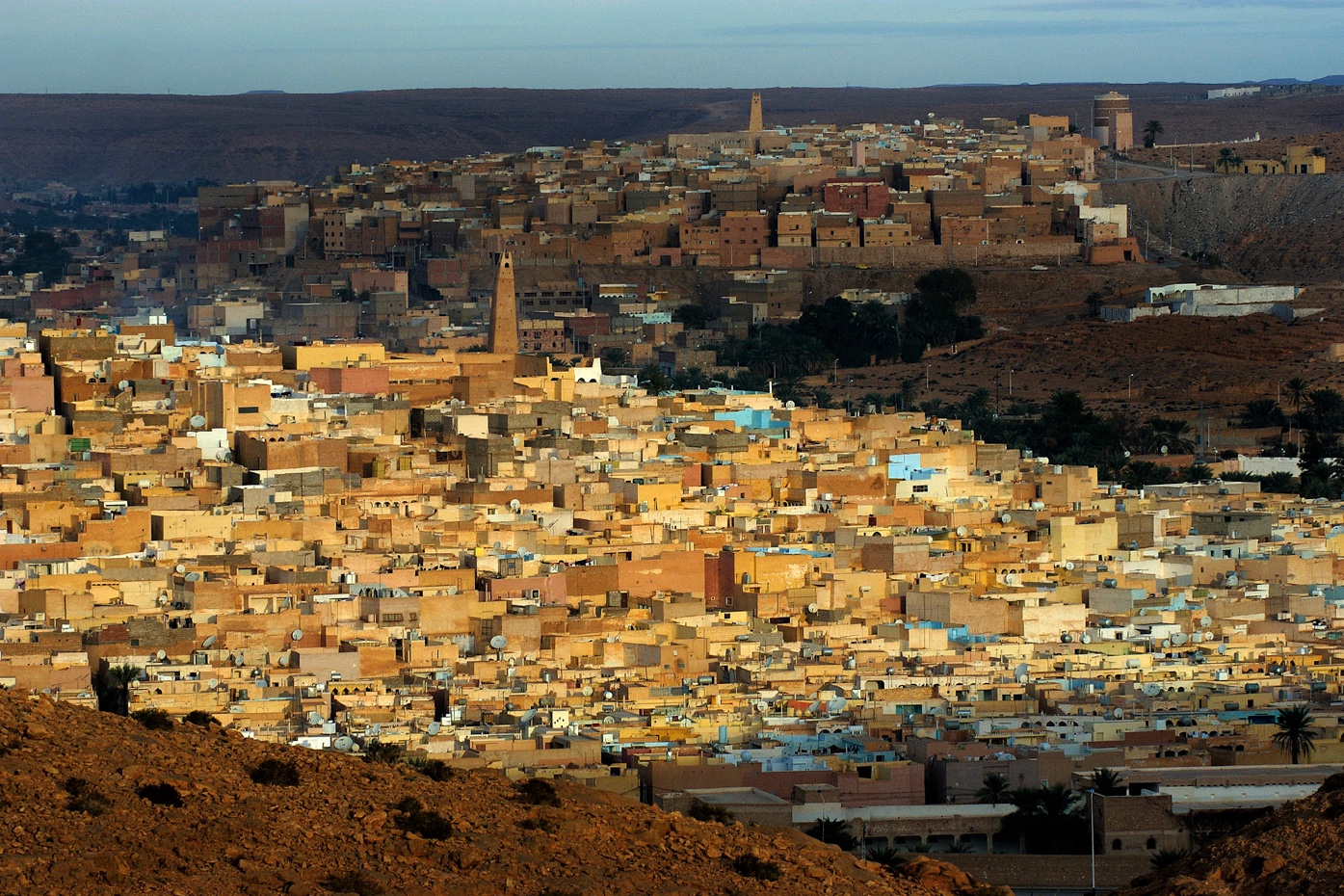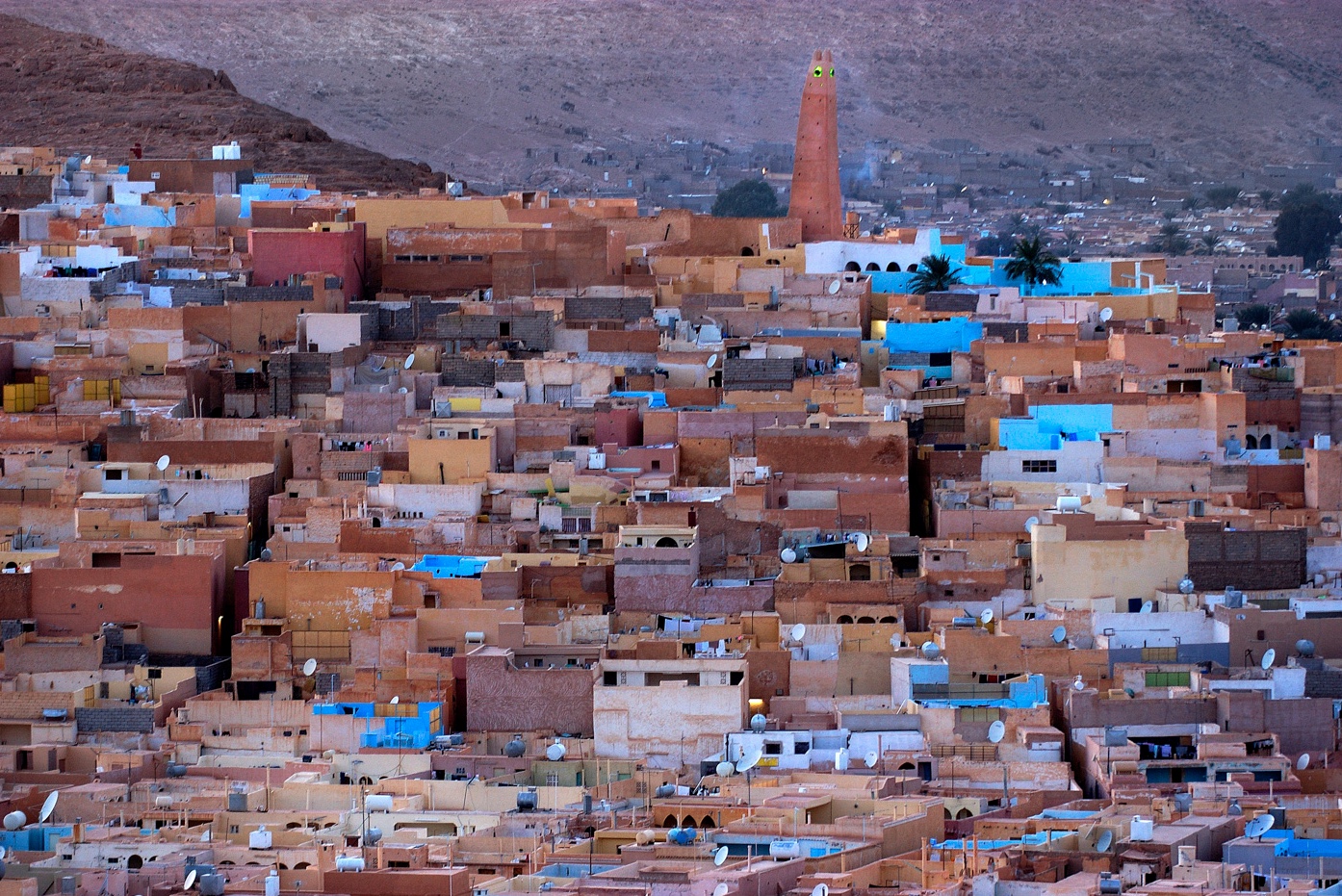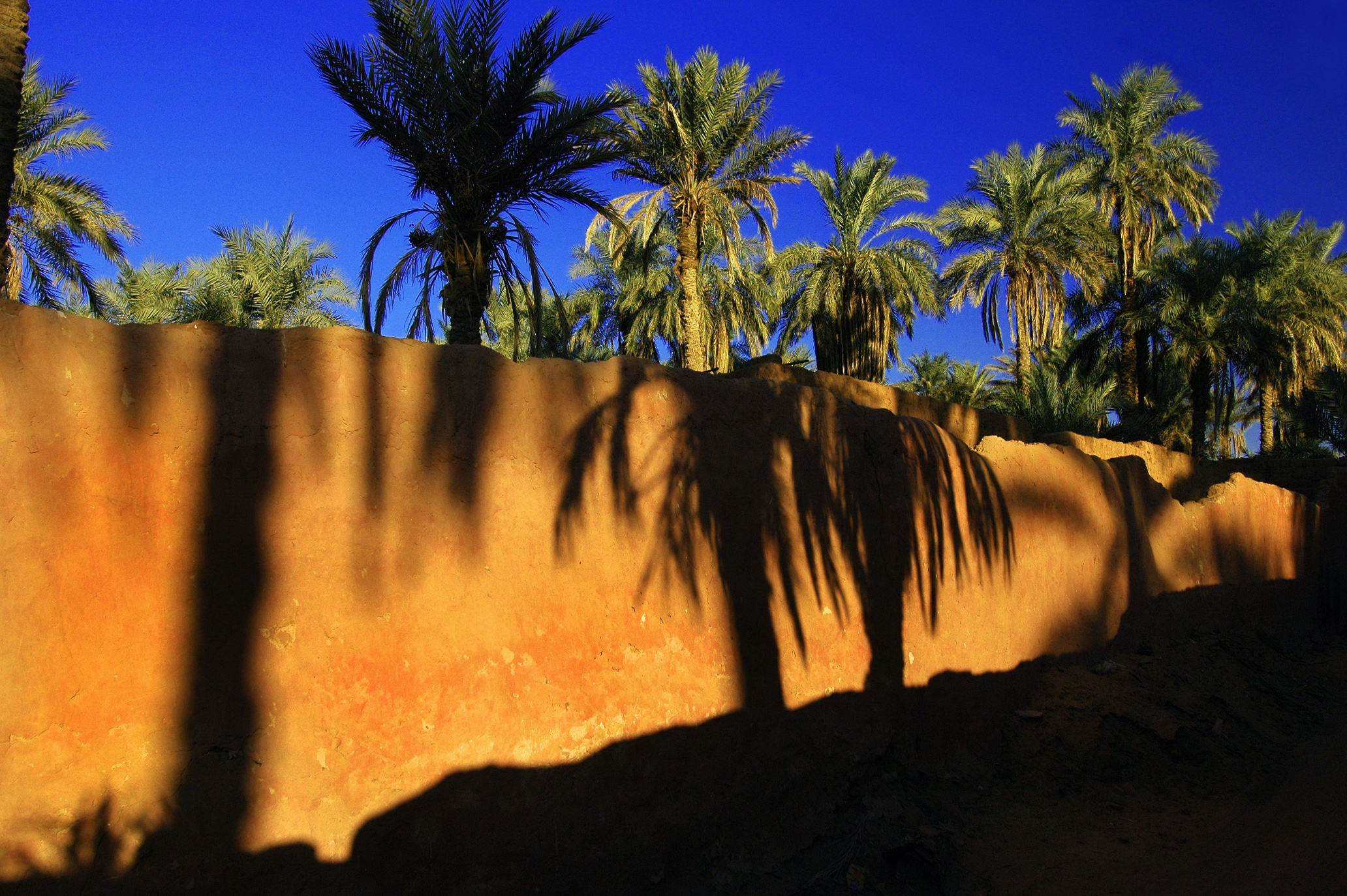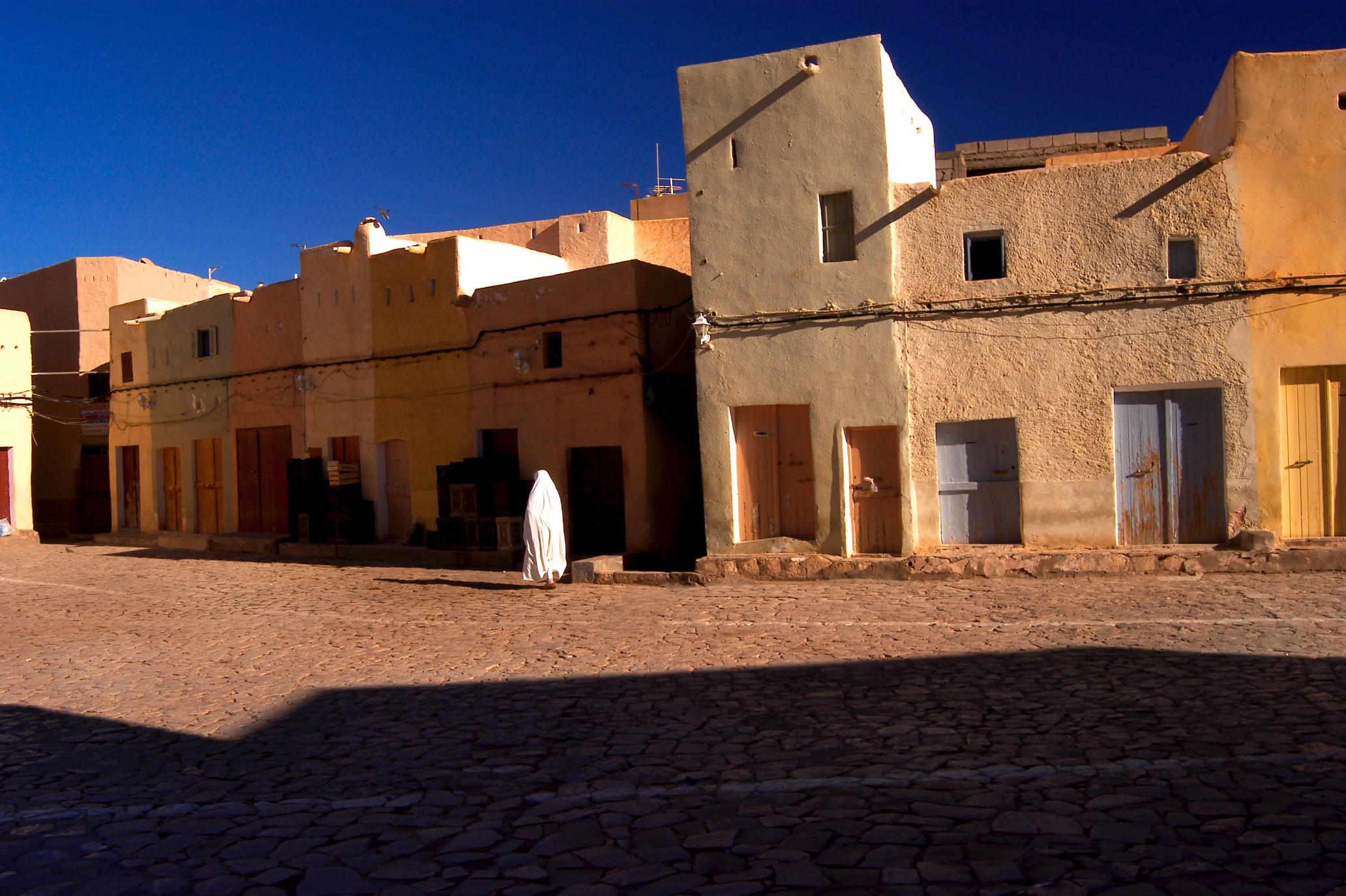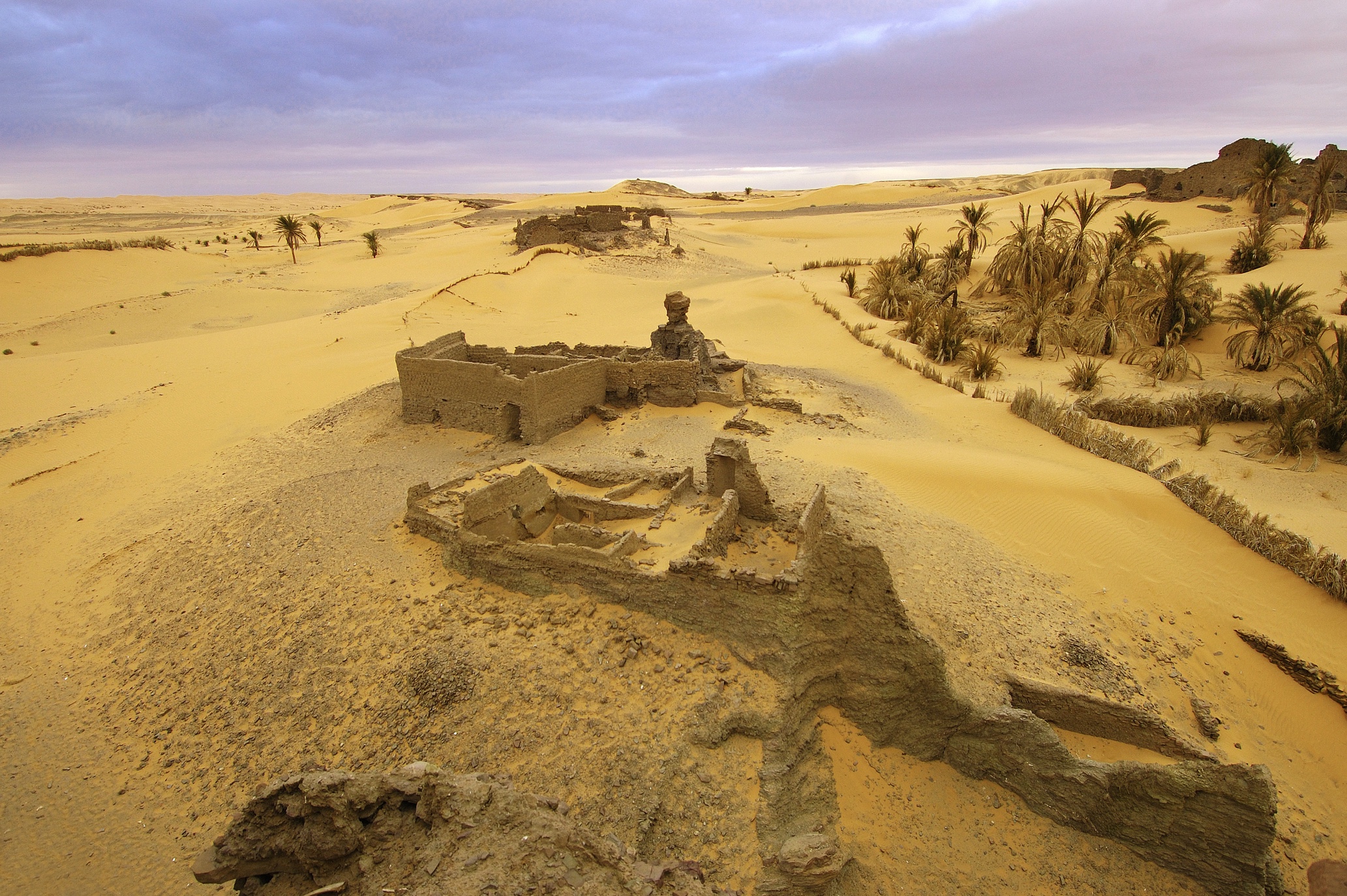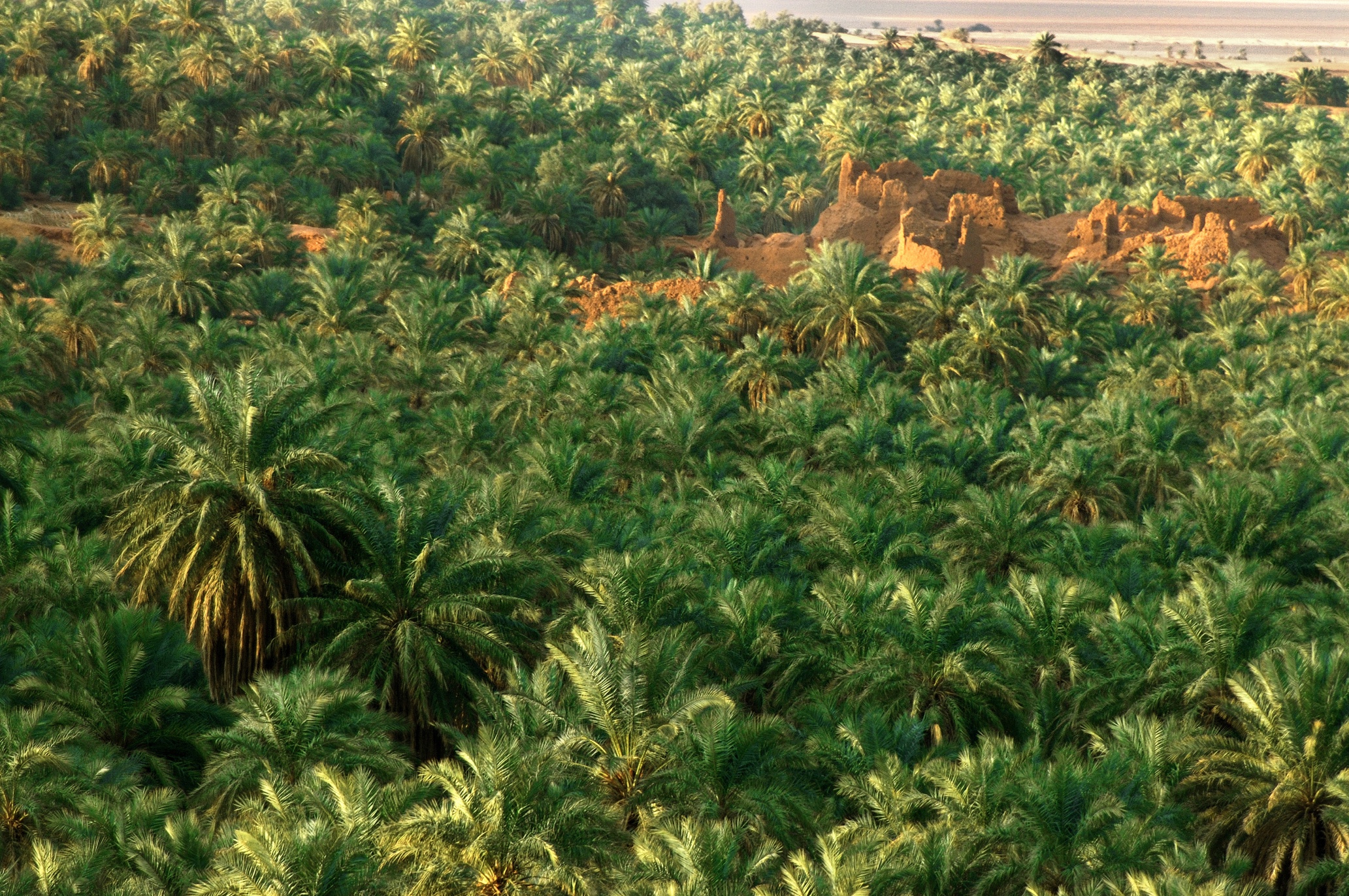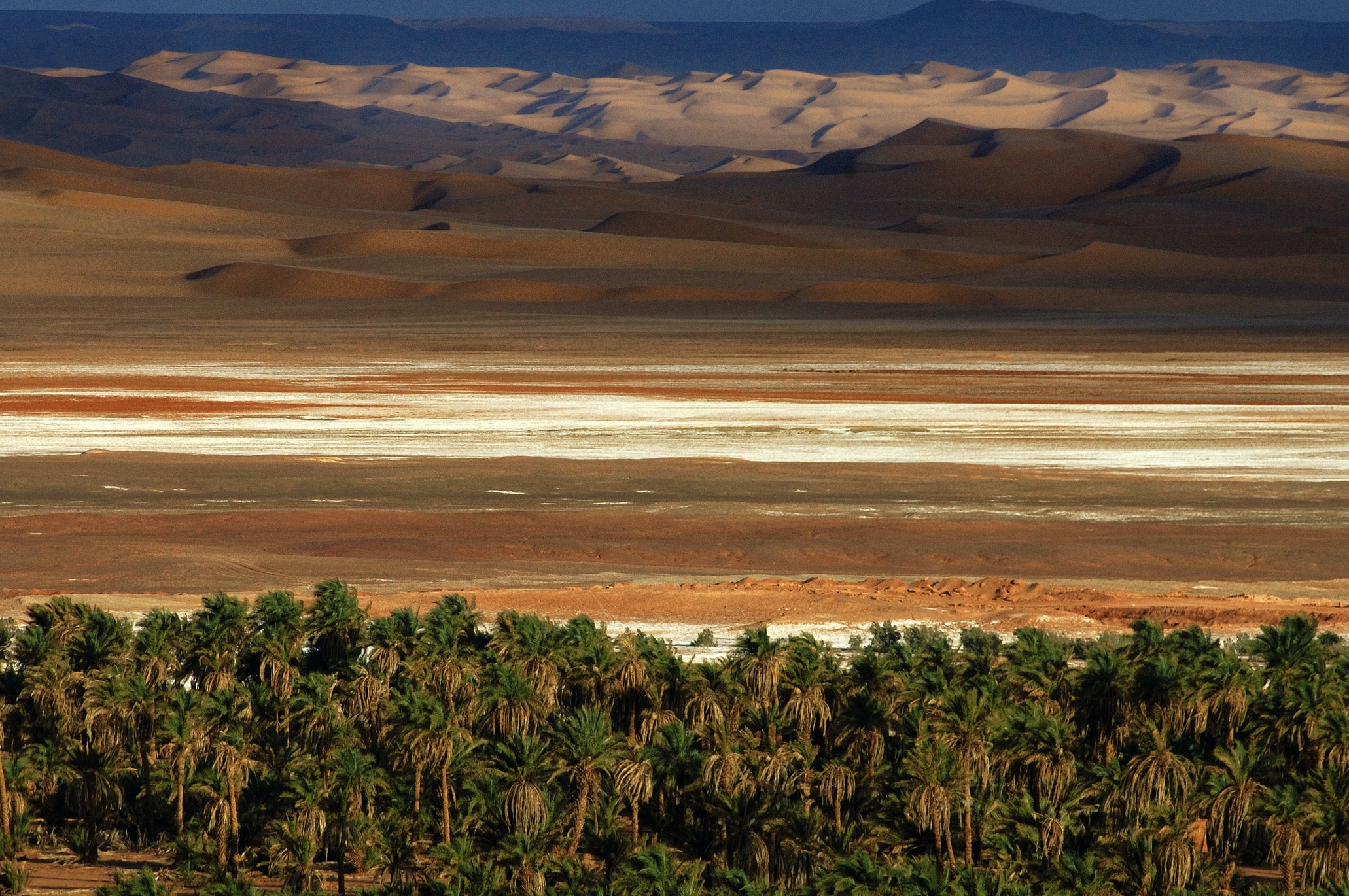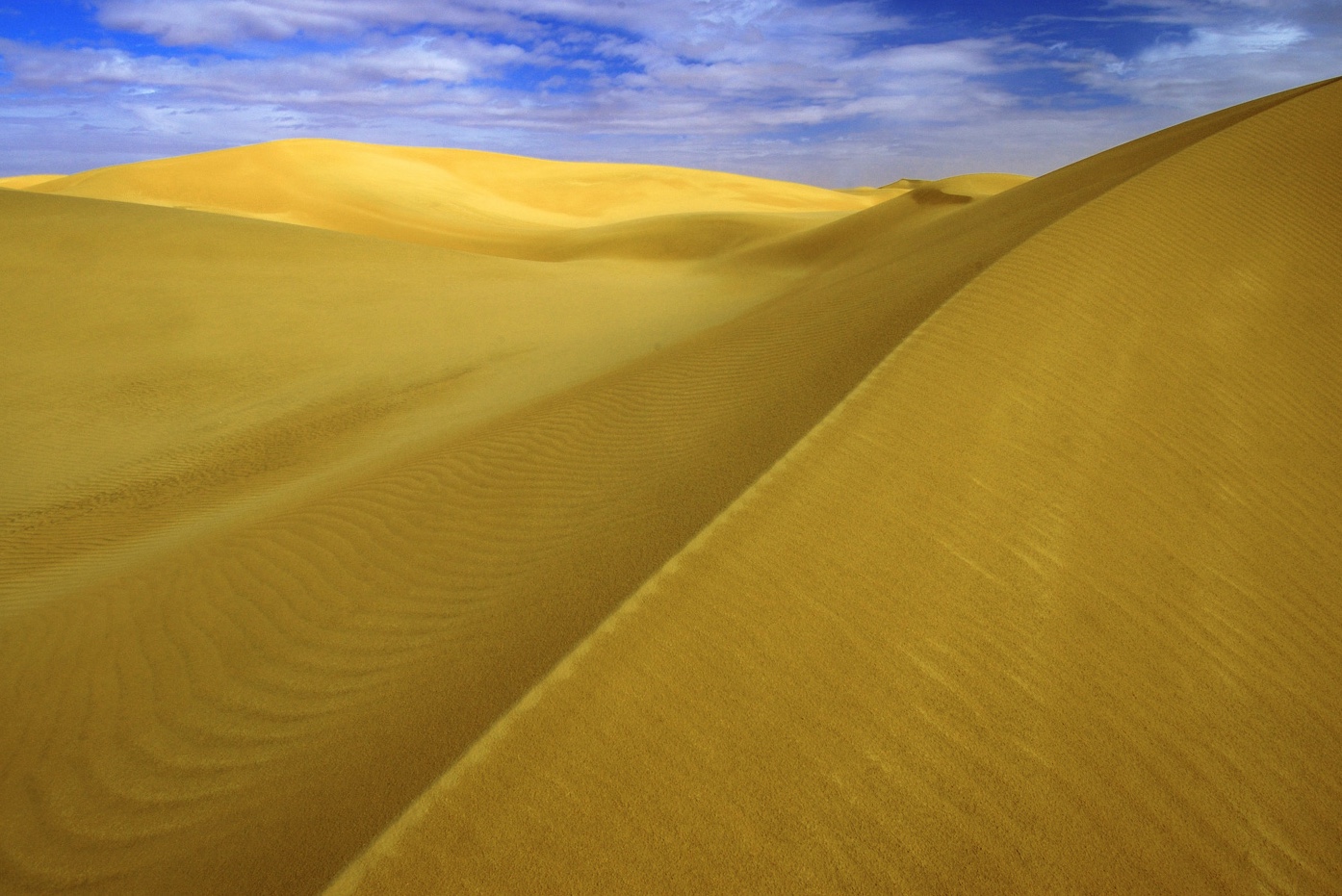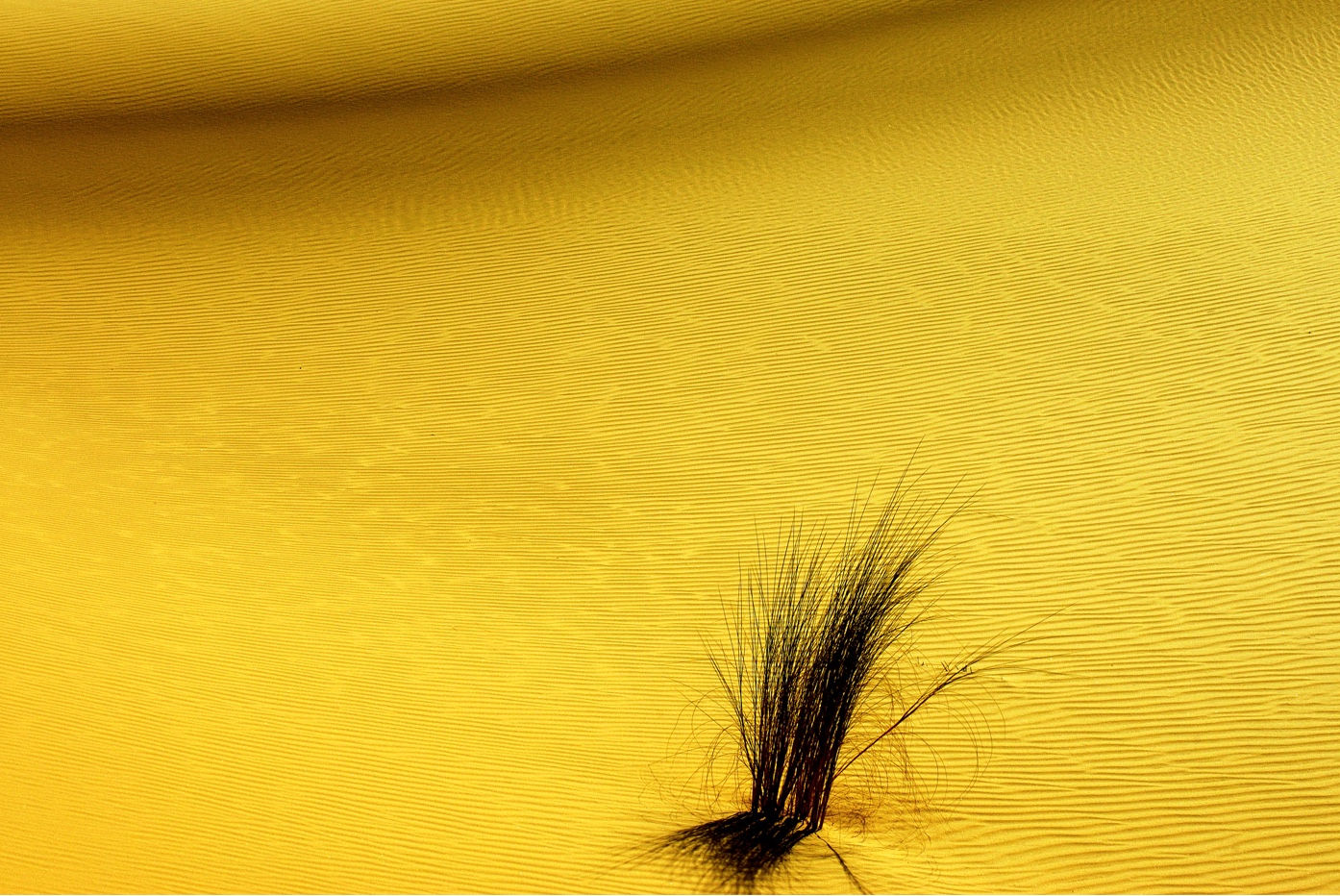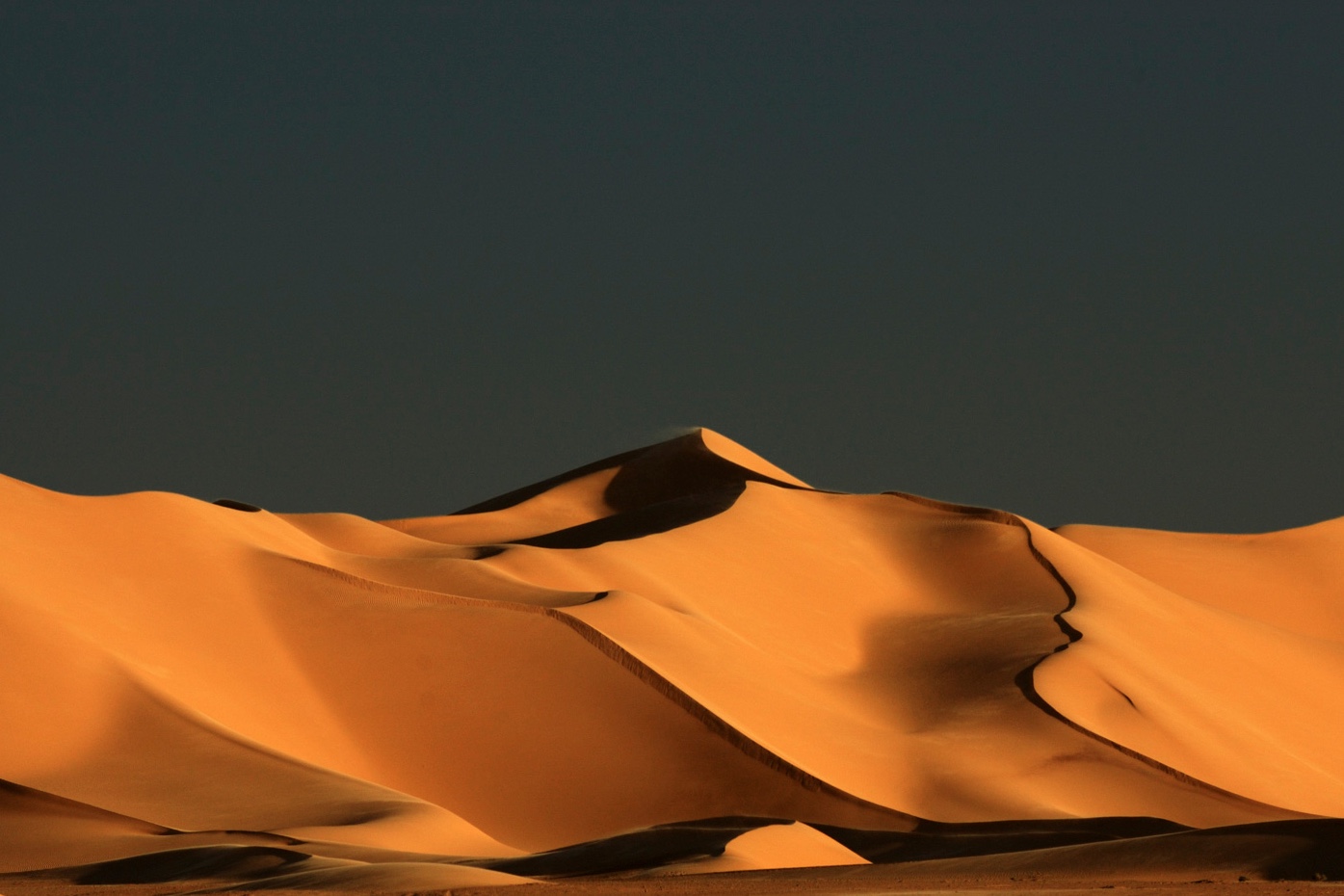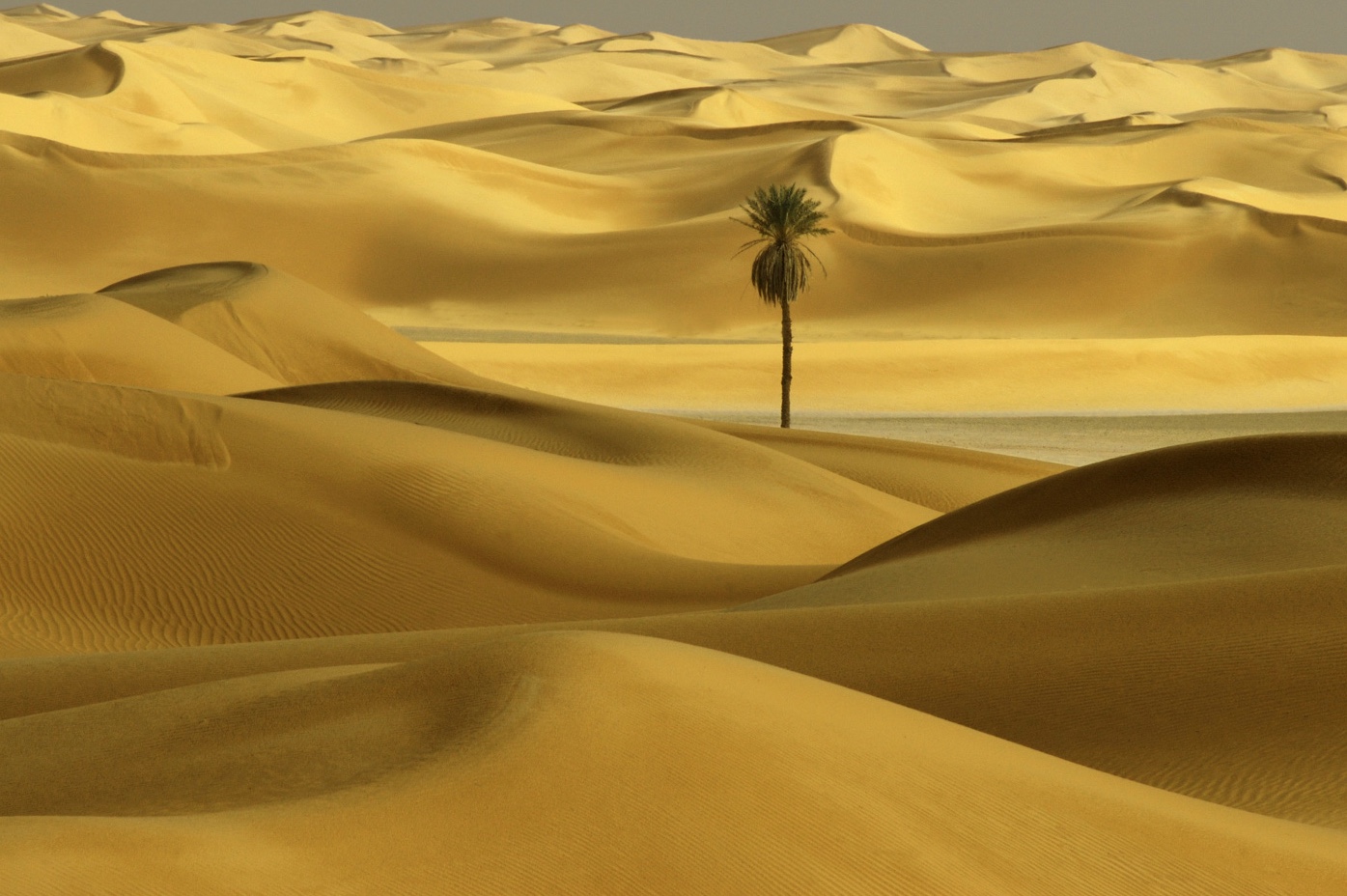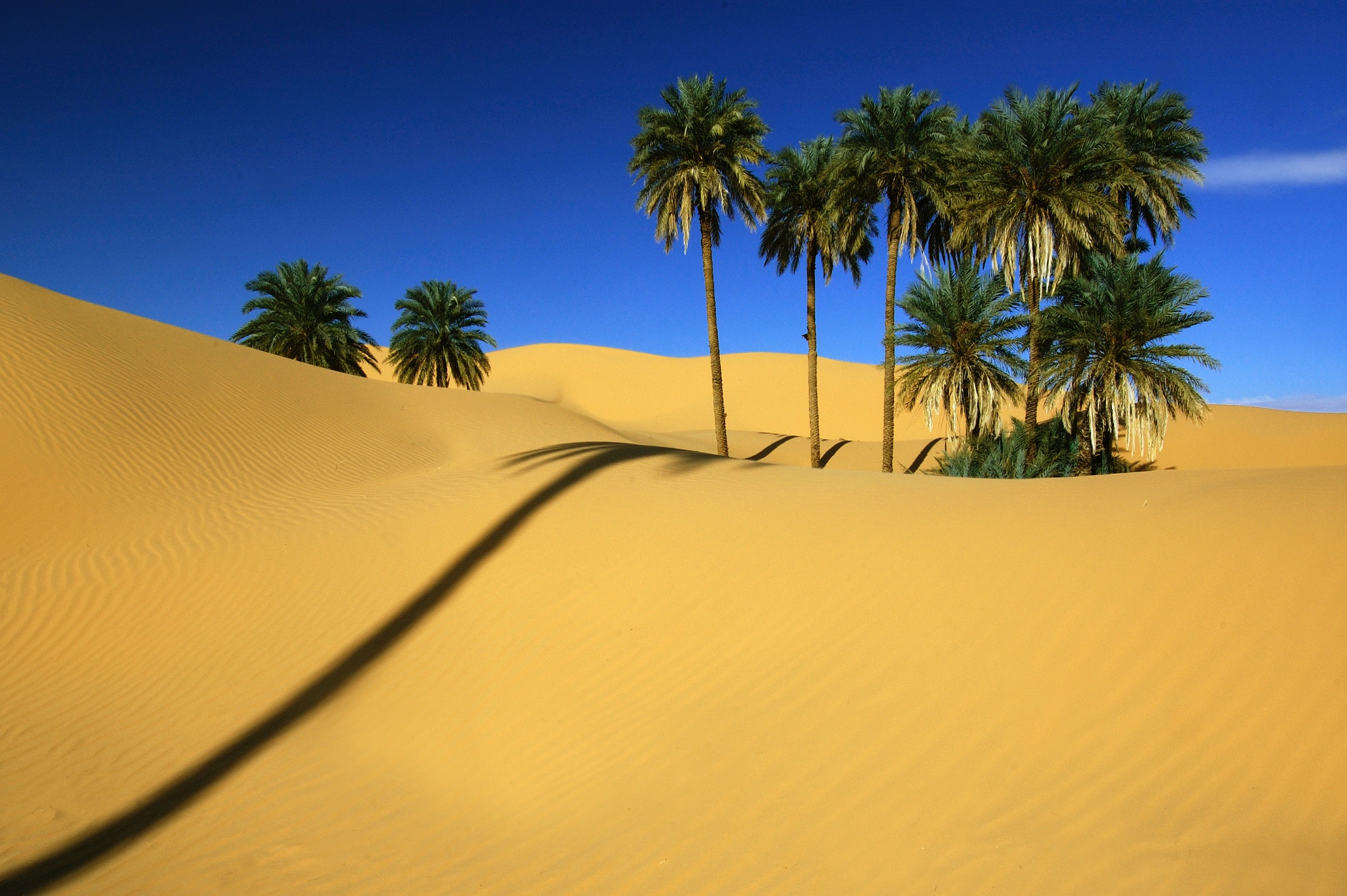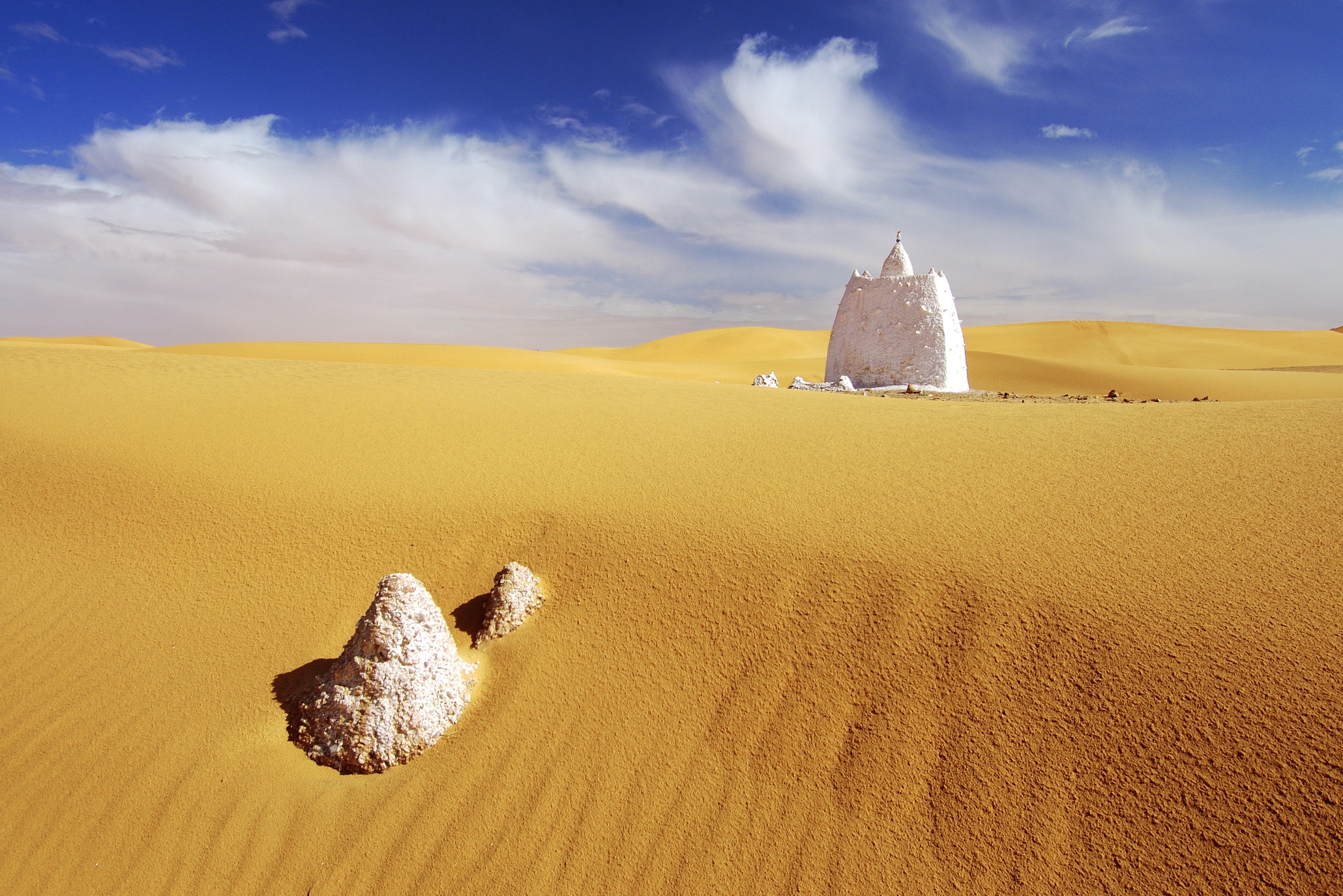
Since the dawn of time, deserts have always been occupied and traveled by Man, despite the strong natural and climatic constraints that prevail there
The Sahara is one of the first settlement regions in the world
It was the cradle of a civilization of nomads and farmers who settled there or took refuge, a civilization that is disappearing with global warming and its corollary, the desertification.
The archetype of the desert is the erg, covered with sand as far as the eye can see, in majestic and moving dunes, without vegetation, permanently exposed to a blazing sun, dazzling luminosity, and swept by violent winds.
The law of the soil does not exist in the desert, it is the law of water that dictates the practices and social rites there. Wealth is water. Thanks to it, Man has been able to create islands of greenery there, oases and palm groves which symbolize its wealth, and not far from there, the traditional village, the ksar. Life has settled in these human pockets far from our globalized civilizations.
The desert is still inhabited by free and modest peoples, who are finding it increasingly difficult to preserve their cultural identity there.
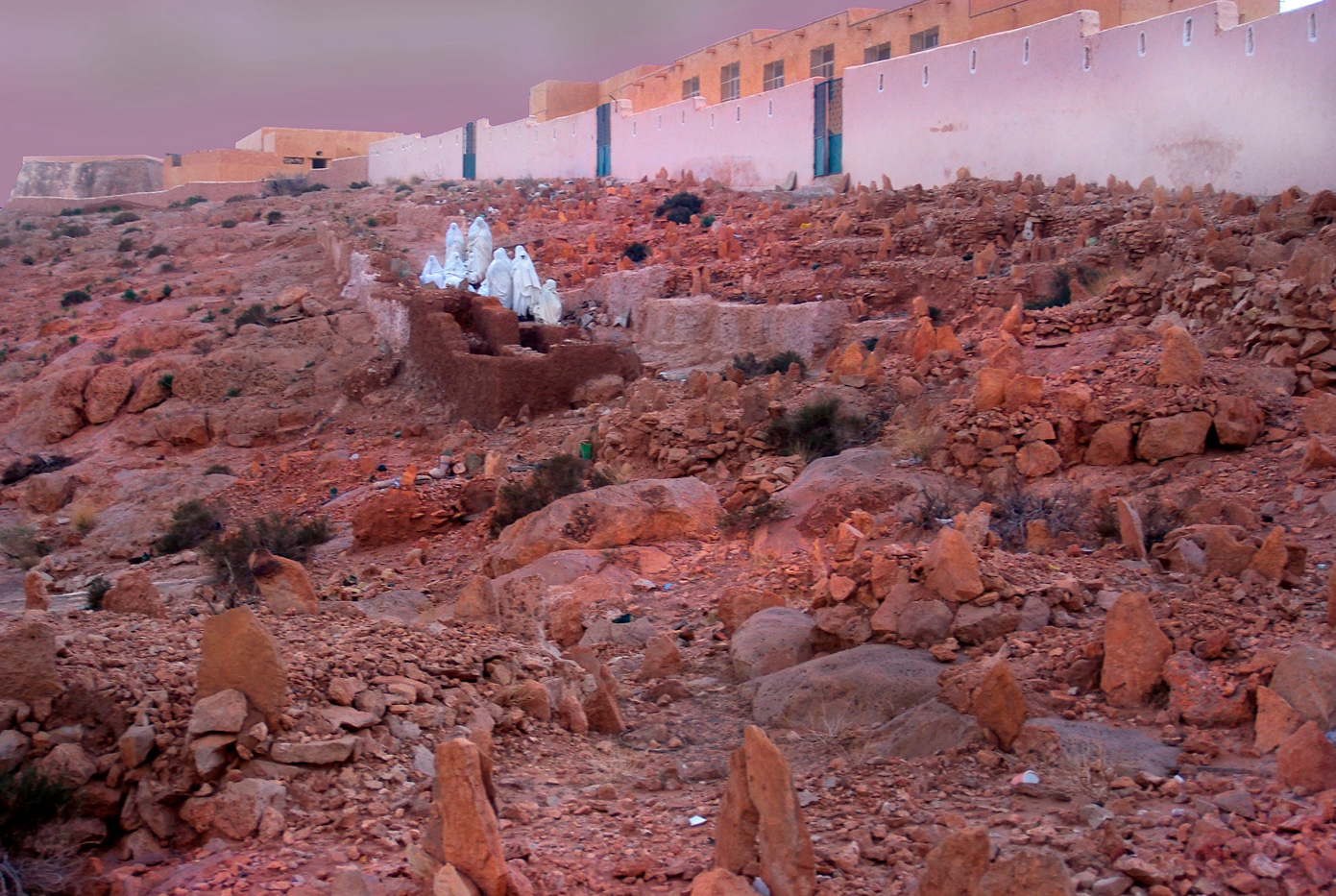
The desert is undoubtedly the best way to lose your bearings of space and time, to rediscover the virtues of silence and contemplation. Indefinable by nature and too often referred to in the singular, when there are so many variations such as dunes, rocks, ice, salt... cold deserts, hot deserts. The desert is a place where you have to waste time, a place that has to be earned. We cannot be in performance or virtuosity.
This series depicts the close and respectful link between Man and Nature, in an environment that is inherently so hostile to the slightest form of life.
